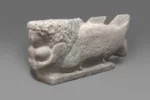In video installations, sculptural reliefs, and one enormous fabric work, Rodney McMillian ponders diverse concepts of blackness in his solo exhibition The Black Show at the Institute of Contemporary Art. Although the exhibition’s political and social implications for race, class, economics, and history in the Unites States might seem obvious, I am fascinated with the work’s uncanny and alluring obscurity.
Blackness as an emotional state
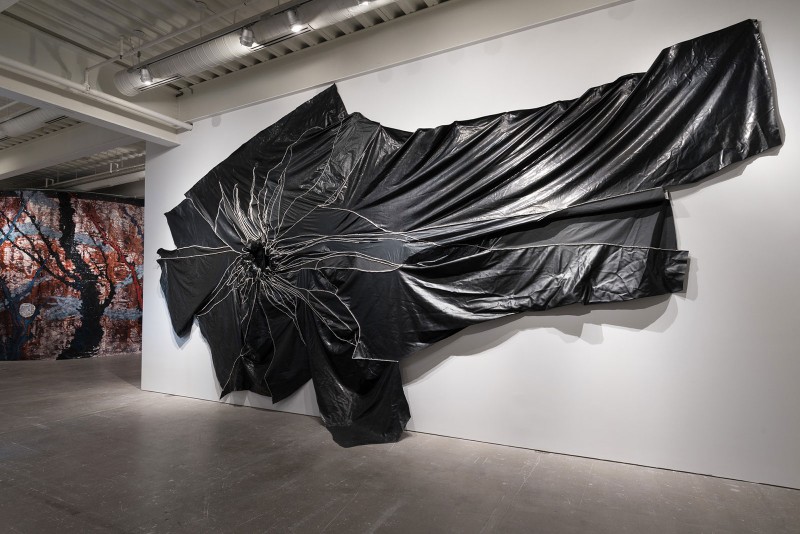
With the ambiguous title “Succulent” (2010), a massive, biomorphic and vortex-like shape of opaque and shiny vinyl sprawls across the entry wall. The black relief with rough-stitched threads introduces the lustrous darkness of Rodney McMillian’s art world. In the large first floor of the ICA, dark materials, undefined cacophonic sounds and a strange impression of ordinariness trigger a kind of unease and discomfort. A walk along The Black Show’s sculptural and video installations reveals blackness as an emotional state that overshadows life and history. The artist’s most recent works in particular, developed in the context of the exhibition, hint at a tragedy which seems to be as vast as it is inevitable.
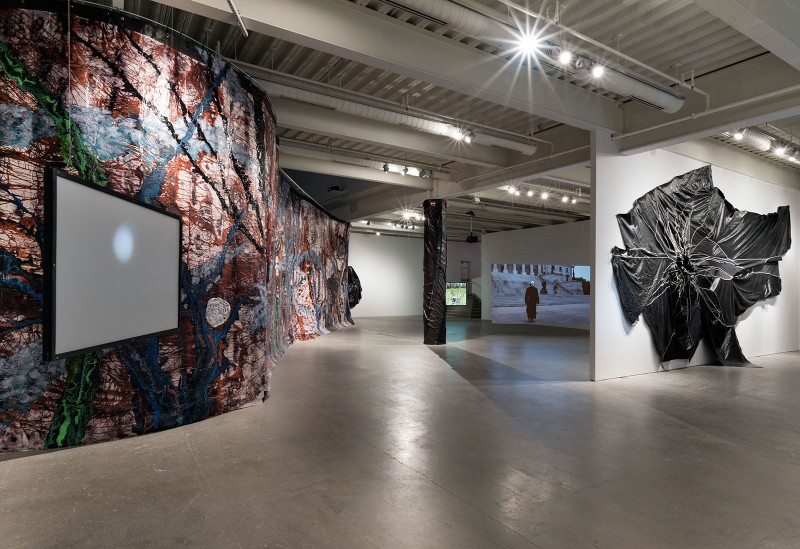
The video “Preacher Man” (2015), which shares the darkly theatrical sensation of the rest of the exhibition, embraces darkness in picturesque images and ministering words. In the middle of the night, an empty chair stands in high grass, crickets chirp, and a dark-suited man appears and solemnly sits down on the chair. Soliloquizing on the meaning of freedom, he circulates around concepts of life, faith, peace, and death. In his monologue, he argues that the only and fated way to gain absolute freedom is death. As simple and unavoidable as this truth might be—humans are peaceful in death and awestruck in life—the plain monologue left me thoughtful: “Then, what is the meaning of life? What is life worth? And, is there nothing more?” A correspondence between religion and current politics seems to me undeniable. While politicians seem to teach us restraint in life according to religious standards, McMillian’s video indirectly raises doubts in my mind about our all-too-easy acceptance of any preacher’s arguments.
Pointing out specific injustices in the exhibition, “Untitled (flag IV)” (2012) presents a lament, embroidered on burlap fabric, about the disequilibrium between the sacrifice of the lives of American soldiers for the nation and their preclusion from voting because of a simple “poll tax” policy. Social injustice seems to be a deeply anchored malevolence, says curator Anthony Elms in the gallery guide. I would add that the works rebuke a crucial misconception of society which is presumed to be based on social sympathy, acceptance, and convergence when it actually is based on prejudice, distinction, and segregation.
Themes of otherness
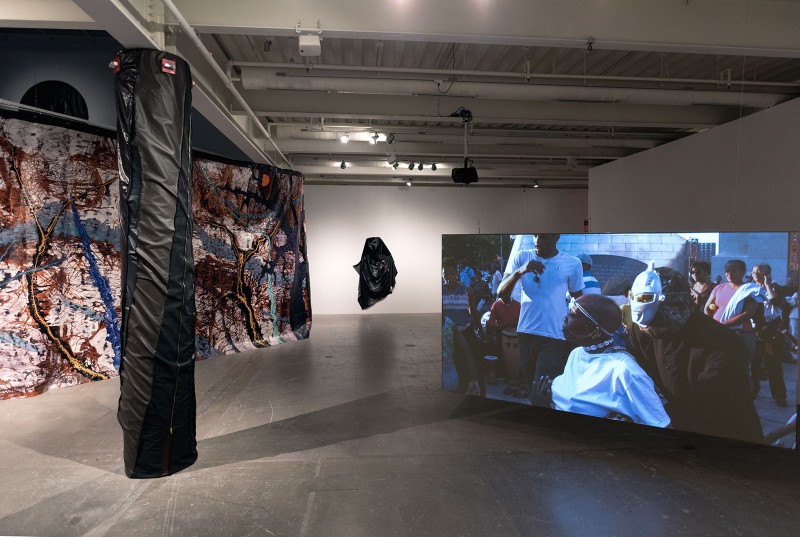
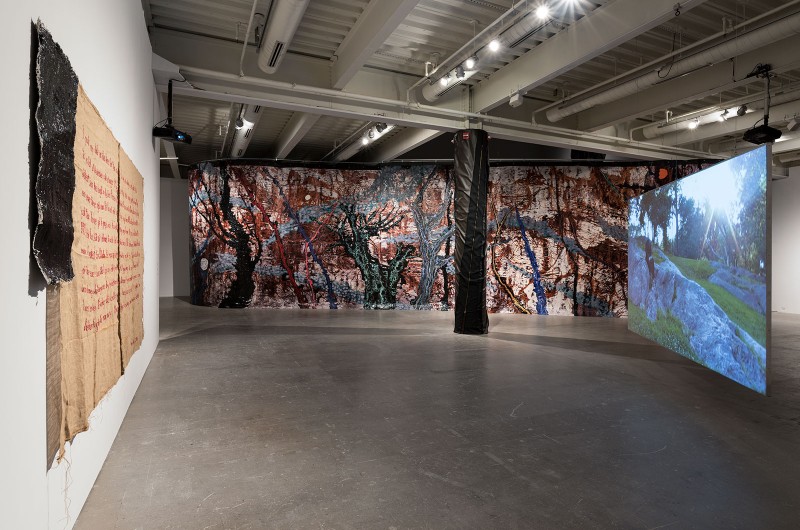
The single-channel video “Migration Tale” (2015) presents a man dressed in a priest’s cassock wearing a silver mask (think Ultraman) who is trying to fit in. Traveling from a veranda in South Carolina to public street life in Harlem, the figure is out of place in both landscapes. His silent assimilation into the rhythms and movements of different social groups continues without results. While at first we smile at the disguised figure, the laughter soon turns to discomfort about the figure’s otherness. As much as he tries to assimilate in the village or the metropolis, as much as he tries to behave as others do, he will remain an alien. Perhaps the migrant is not unlike the artist himself—born in South Carolina and currently an assistant professor at the University of California, Los Angeles—who is constantly moving between cities.
Palpable darkness
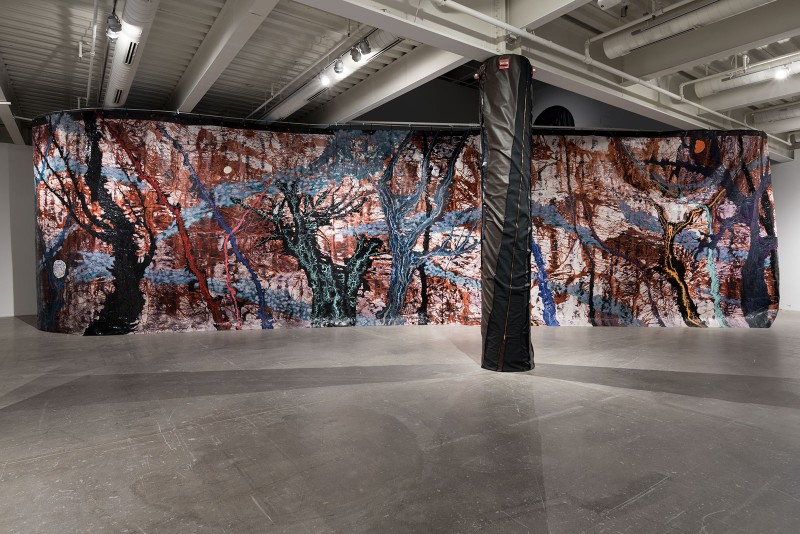
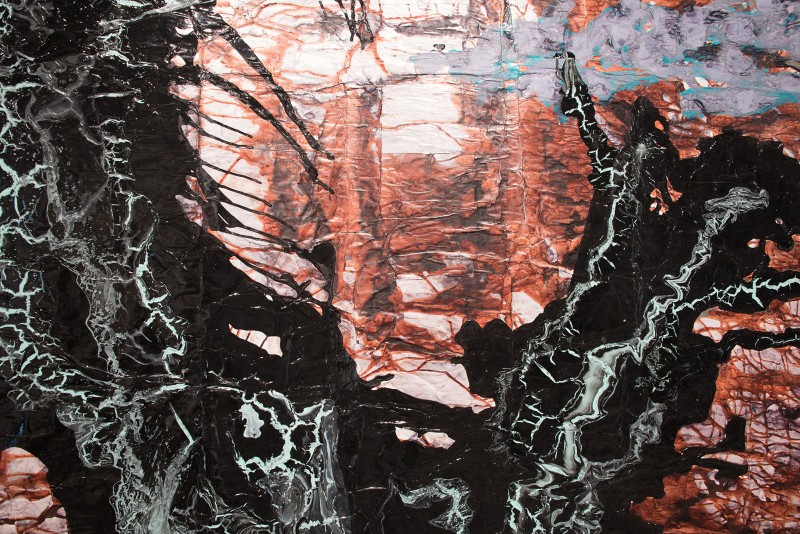
Like the alienated figure in “Migration Tale,” the people in McMillian’s videos inhabit problematic spaces and undergo challenges—whether as a priest marching through flickering light, as a soldier apocalyptically croaking, “It is just a shot away,” or as a lonely reader in front of an absent audience. The works in The Black Show oscillate between the obscure ordinariness of life and the grandiosity of tragedy. This sensation of ordinariness and grandiosity also exemplifies “Many Moons” (2015). Impressive not only for its giganticness but also for its method of manufacture, the massive curtain of 72 ft x 15 ft spans the gallery floor; it is fabricated on one side with black cloth, on the other side with paper, which is covered with heavy impasto veins or tendrils that form leafless trees in a mysterious blood-colored landscape. The black latex paint on the one side particularly seems to occupy the curtain’s surface and slowly takes over the landscape. Like a spreading ulcer, darkness becomes remarkably present and almost palpable in this work.
Finally, The Black Show makes me think about José Saramago’s epic novel “Blindness” (1997), in which blindness invokes darkness, oscillating between sociopolitical misconception and human malice. “I don’t think we did go blind,” reflects one of Saramago’s figures at the end. “I think we are blind, Blind but seeing, Blind people who can see, but do not see.” Rodney McMillian makes us ask ourselves whether we really can see through the obscurity of truth in today’s dark times.
The Black Show is open through August 14, 2016 at the Institute for Contemporary Art, Philadelphia on Wednesdays, 11–8, Thursdays and Fridays, 11–6, and Saturdays and Sundays, 11–5.
A conversation on March 30, 2016 between the artist Rodney McMillian, ICA Chief Curator Anthony Elms and Naima Keith, Associate Curator at the Studio Museum shouldn’t be missed. A counterpart of the ICA’s exhibition, called Rodney McMillian: Views of Main Street, will also be presented at the Studio Museum in Harlem from March 24, 2016 to June 26, 2016.




